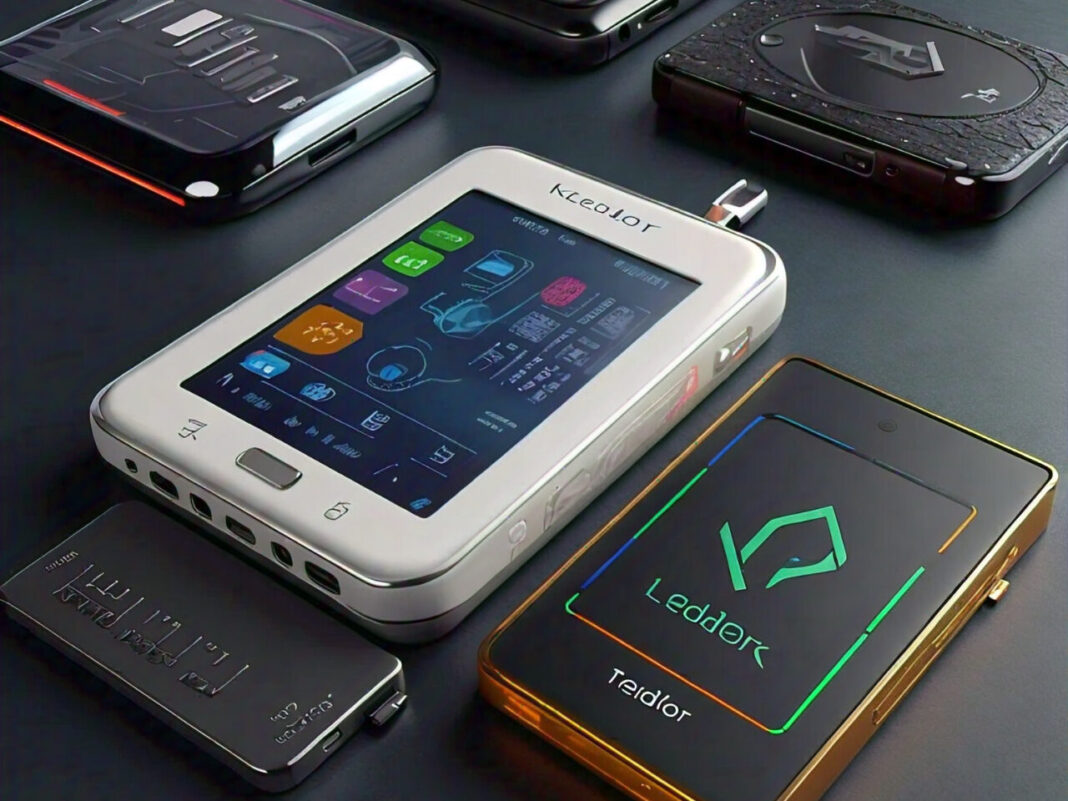
As a cryptocurrency investor, securing your digital assets is paramount. With the rise of hacking incidents and theft, protecting your investments has become more crucial than ever. One of the most effective ways to safeguard your cryptocurrencies is by using a cold wallet. In this comprehensive guide, we will walk you through the process of choosing the best crypto cold wallet tailored to your needs.
The Importance of Cold Wallets
Cold wallets offer an additional layer of security compared to hot wallets, which are connected to the internet and vulnerable to cyber-attacks. By storing your cryptocurrencies offline, cold wallets significantly reduce the risk of hacking and theft. Moreover, cold wallets provide a long-term storage solution, allowing you to diversify your investment portfolio and manage your assets efficiently.
Who is this Guide For?
This guide is designed specifically for:
- Cryptocurrency investors seeking to secure their investments
- Online security-conscious users looking to maximize protection
- Beginners interested in understanding crypto cold wallets
- Experienced users upgrading from hot wallets or outdated cold wallets
What to Expect
In this article, we will cover:
- Key factors to consider when choosing a crypto cold wallet
- Types of cold wallets and their features
- Top cold wallet recommendations
- Best practices for secure cold wallet use
- Frequently asked questions
By the end of this guide, you will be equipped with the knowledge to select the best crypto cold wallet tailored to your unique needs, ensuring the security and integrity of your digital assets.
Understanding Crypto Cold Wallets
Before diving into the process of choosing the best crypto cold wallet, it’s essential to understand what cold wallets are, how they work, and their benefits.
What are Crypto Cold Wallets?
Crypto cold wallets are offline storage devices or methods that store your cryptocurrency private keys securely, protecting your digital assets from unauthorized access. Unlike hot wallets, which are connected to the internet, cold wallets are disconnected from the internet, making them virtually unhackable.
Types of Crypto Cold Wallets
There are several types of crypto cold wallets available:
1. Hardware Wallets
Hardware wallets are physical devices that store your private keys securely. They are considered one of the most secure types of cold wallets.
Examples:
- Ledger Nano X
- Trezor Model T
- KeepKey
How they work:
Hardware wallets generate private keys offline and store them within the device. When you want to make a transaction, the wallet signs the transaction offline and then broadcasts it to the blockchain.
2. Paper Wallets
Paper wallets are printed documents containing your public and private keys.
Examples:
- Bitcoin Paper Wallet
- Ethereum Paper Wallet
How they work:
Paper wallets are generated offline, and the private key is printed on the document. To make a transaction, you need to transfer the funds to a new wallet or use a software wallet to sweep the funds.
3. Offline Wallets
Offline wallets are software wallets that can be used offline.
Examples:
- Coldcard
- Ellipal
How they work:
Offline wallets generate private keys offline and store them securely. Transactions are signed offline, and then broadcast to the blockchain.
Benefits of Crypto Cold Wallets
Crypto cold wallets offer several benefits:
- Security: Offline storage protects against hacking and cyber-attacks.
- Long-term storage: Cold wallets provide a secure solution for storing cryptocurrencies long-term.
- Diversification: Cold wallets enable you to manage multiple cryptocurrencies and wallets.
- Anonymity: Some cold wallets offer anonymity features.
Key Factors to Consider When Choosing a Crypto Cold Wallet

When selecting a crypto cold wallet, consider the following key factors:
1. Security Features
- Encryption: Look for wallets with advanced encryption algorithms, such as AES-256.
- Two-Factor Authentication (2FA): Ensure the wallet has robust 2FA mechanisms.
- Open-Source: Consider open-source wallets for transparency and community trust.
Examples:
- Ledger Nano X: Uses AES-256 encryption and has 2FA.
- Trezor Model T: Offers advanced encryption and open-source code.
2. Multi-Asset Support
- Multiple Cryptocurrency Support: Choose a wallet that supports various cryptocurrencies.
- Token Support: Consider wallets that support ERC-20, TRC-20, and other tokens.
Examples:
- Ledger Nano X: Supports over 1,500 cryptocurrencies.
- KeepKey: Supports Bitcoin, Ethereum, Litecoin, and other popular cryptocurrencies.
3. Cost-Effectiveness
- Initial Cost: Consider the wallet’s purchase price.
- Transaction Fees: Check the wallet’s transaction fees.
Examples:
- Ledger Nano X: $119 (initial cost).
- Trezor Model T: $149 (initial cost).
4. Ease of Use
- User-Friendly Interface: Choose a wallet with an intuitive interface.
- Mobile Compatibility: Consider wallets with mobile apps.
Examples:
- Ledger Live (mobile app): Compatible with Ledger Nano X.
- Trezor Suite (desktop app): Compatible with Trezor Model T.
5. Reputation and Reviews
- Manufacturer Reputation: Research the manufacturer’s reputation.
- User Reviews: Read reviews from other users.
Examples:
- Ledger: 4.5/5 stars on Trustpilot.
- Trezor: 4.5/5 stars on Trustpilot.
6. Physical Security
- Durability: Choose a wallet with a durable design.
- Tamper-Evidence: Consider wallets with tamper-evident features.
Examples:
- Ledger Nano X: Has a durable stainless steel design.
- Trezor Model T: Features tamper-evident packaging.
7. Private Key Management
- Private Key Control: Ensure the wallet allows private key control.
- Seed Phrase: Consider wallets with seed phrase backup.
Examples:
- Ledger Nano X: Allows private key control.
- Trezor Model T: Offers seed phrase backup.
Types of Crypto Cold Wallets: A Deep Dive
Crypto cold wallets come in various forms, each with unique features and benefits. Let’s explore the most popular types:
1. Hardware Wallets
Hardware wallets are physical devices designed to store cryptocurrency private keys securely.
Examples
- Ledger Nano X
- Trezor Model T
- KeepKey
- Coldcard
Features
- Offline storage
- Secure chip technology
- PIN protection
- Seed phrase backup
- Multi-currency support
How they work
- Generate private keys offline.
- Store keys within the device.
- Sign transactions offline.
- Broadcast transactions to the blockchain.
2. Paper Wallets
Paper wallets are printed documents containing public and private keys.
Examples
- Bitcoin Paper Wallet
- Ethereum Paper Wallet
Features
- Offline storage
- Low cost
- Easy to use
- Limited security
How they work
- Generate private keys offline.
- Print public and private keys.
- Transfer funds to the paper wallet.
- Use software wallet to sweep funds.
3. Offline Software Wallets
Offline software wallets are programs that can be used offline.
Examples
- Electrum
- Armory
- Cold Storage
Features
- Offline storage
- Secure encryption
- Multi-currency support
- Advanced features
How they work
- Generate private keys offline.
- Store keys securely.
- Sign transactions offline.
- Broadcast transactions to the blockchain.
4. Hybrid Wallets
Hybrid wallets combine hot and cold wallet features.
Examples
- Ledger Live
- Trezor Suite
Features
- Online and offline storage
- Secure encryption
- Multi-currency support
- User-friendly interface
How they work
- Store private keys offline.
- Use online interface for transactions.
- Sign transactions offline.
- Broadcast transactions to the blockchain.
Comparison of Cold Wallet Types
| Type | Security | Ease of Use | Cost |
|---|---|---|---|
| Hardware Wallet | High | Medium | $100-$200 |
| Paper Wallet | Low | Easy | $0-$10 |
| Offline Software Wallet | Medium | Medium | $0-$50 |
| Hybrid Wallet | High | Easy | $100-$200 |
Beginner’s Guide to Choosing a Crypto Cold Wallet
As a beginner, choosing the right crypto cold wallet can seem overwhelming. Here’s a step-by-step guide to help you make an informed decision:
Step 1: Determine Your Needs
- What cryptocurrencies do you want to store?
- How much do you want to spend?
- Do you need advanced features?
Step 2: Understand Cold Wallet Types
- Hardware Wallets: Ledger, Trezor, KeepKey
- Paper Wallets: Bitcoin Paper Wallet, Ethereum Paper Wallet
- Offline Software Wallets: Electrum, Armory
Step 3: Consider Security Features
- Encryption: Look for AES-256 encryption.
- Two-Factor Authentication (2FA): Ensure 2FA is available.
- Open-Source: Consider open-source wallets for transparency.
Step 4: Evaluate Ease of Use
- User-Friendly Interface: Look for intuitive interfaces.
- Mobile Compatibility: Consider wallets with mobile apps.
Step 5: Research Reputation
- Read Reviews: Check Trustpilot, Reddit, and other forums.
- Manufacturer Reputation: Research the company’s history.
Step 6: Compare Costs
- Initial Cost: Consider the wallet’s purchase price.
- Transaction Fees: Check the wallet’s transaction fees.
Real-Life Examples:
- Beginner-Friendly Wallets:
- Ledger Nano X (hardware wallet)
- Electrum (offline software wallet)
- Budget-Friendly Options:
- KeepKey (hardware wallet)
- Bitcoin Paper Wallet (paper wallet)
Tips for Beginners:
- Start small: Begin with a small investment.
- Educate yourself: Learn about cryptocurrency and wallet security.
- Be cautious: Avoid phishing scams and fake wallets.
Frequently Asked Questions (FAQs)
- What is the best crypto cold wallet for beginners?
- Ledger Nano X or Electrum.
- How do I set up a crypto cold wallet?
- Follow the manufacturer’s instructions.
- What happens if I lose my wallet?
- Use your seed phrase to recover your funds.
By following these steps and considering your needs, you’ll be able to choose the best crypto cold wallet for your investments.
Advanced Features for Online Security Conscious Users

For online security conscious users, crypto cold wallets offer advanced features to enhance security and anonymity:
1. Anonymity Features
- Stealth Addresses: Hide your public address.
- Coin Mixing: Mix transactions to obscure origins.
Example: Ledger Nano X’s “Stealth Address” feature.
2. Advanced 2FA Mechanisms
- SMS 2FA: Receive verification codes via SMS.
- Authenticator Apps: Use apps like Google Authenticator.
- Hardware 2FA: Use hardware tokens like YubiKey.
Example: Trezor Model T’s “Authenticator App” integration.
3. Open-Source Code
- Transparent Code: Review and audit the wallet’s code.
- Community Verification: Benefit from community testing.
Example: Electrum’s open-source code on GitHub.
4. Regular Security Updates
- Automated Updates: Receive updates automatically.
- Manual Updates: Update manually for added security.
Example: Ledger’s regular security updates.
5. Secure Private Key Management
- Hierarchical Deterministic (HD) Wallets: Generate new addresses.
- Seed Phrase Backup: Recover funds with seed phrase.
Example: KeepKey’s HD wallet feature.
6. Tor Integration
- Anonymous Transactions: Use Tor for anonymous transactions.
- Hidden Services: Access hidden services.
Example: Electrum’s Tor integration.
7. Multi-Signature Wallets
- Multi-User Access: Require multiple signatures.
- Increased Security: Enhance security with multiple signatures.
Example: Ledger Nano X’s multi-signature feature.
Real-Life Examples:
- High-Security Wallets:
- Ledger Nano X
- Trezor Model T
- Anonymous Transactions:
- Electrum with Tor
- Bitcoin mixing services
Tips for Advanced Users:
- Use strong passwords: Protect your wallet with strong passwords.
- Enable 2FA: Use 2FA mechanisms for added security.
- Keep software up-to-date: Regularly update your wallet software.
Frequently Asked Questions (FAQs)
- What is the most secure crypto cold wallet?
- Ledger Nano X or Trezor Model T.
- How do I enable 2FA on my wallet?
- Follow the manufacturer’s instructions.
- What is the benefit of open-source code?
- Transparency and community verification.
By utilizing these advanced features, online security-conscious users can further enhance the security and anonymity of their crypto cold wallets.
Top Crypto Cold Wallets for Cryptocurrency Investors
Here are some of the top crypto cold wallets for cryptocurrency investors:
1. Ledger Nano X
- Security: Advanced encryption, 2FA, and secure chip technology
- Multi-Asset Support: Over 1,500 cryptocurrencies
- Ease of Use: User-friendly interface, mobile app
- Cost: $119
- Reputation: 4.5/5 stars on Trustpilot
Example: Store Bitcoin, Ethereum, and other cryptocurrencies securely.
2. Trezor Model T
- Security: Advanced encryption, 2FA, and secure chip technology
- Multi-Asset Support: Over 1,000 cryptocurrencies
- Ease of Use: User-friendly interface, desktop app
- Cost: $149
- Reputation: 4.5/5 stars on Trustpilot
Example: Store Bitcoin, Ethereum, and other cryptocurrencies securely.
3. KeepKey
- Security: Advanced encryption, 2FA
- Multi-Asset Support: Bitcoin, Ethereum, Litecoin, and others
- Ease of Use: User-friendly interface
- Cost: $49
- Reputation: 4.5/5 stars on Trustpilot
Example: Store Bitcoin and other popular cryptocurrencies securely.
4. Coldcard
- Security: Advanced encryption, 2FA
- Multi-Asset Support: Bitcoin, Ethereum, and others
- Ease of Use: Simple interface
- Cost: $75
- Reputation: 4.5/5 stars on Trustpilot
Example: Store Bitcoin and other cryptocurrencies securely offline.
5. Ellipal
- Security: Advanced encryption, 2FA
- Multi-Asset Support: Over 1,000 cryptocurrencies
- Ease of Use: User-friendly interface, mobile app
- Cost: $149
- Reputation: 4.5/5 stars on Trustpilot
Example: Store Bitcoin, Ethereum, and other cryptocurrencies securely.
Comparison of Top Cold Wallets
| Wallet | Security | Multi-Asset Support | Ease of Use | Cost |
|---|---|---|---|---|
| Ledger Nano X | High | 1,500+ | Medium | $119 |
| Trezor Model T | High | 1,000+ | Medium | $149 |
| KeepKey | Medium | 10+ | Easy | $49 |
| Coldcard | Medium | 10+ | Simple | $75 |
| Ellipal | High | 1,000+ | Easy | $149 |
Best Practices for Secure Cold Wallet Use
To ensure the security and integrity of your crypto cold wallet, follow these best practices:
1. Private Key Management
- Secure Seed Phrase: Store seed phrase in a safe place.
- Avoid Sharing: Never share private keys or seed phrase.
- Use HD Wallets: Generate new addresses with HD wallets.
Example: Ledger Nano X’s seed phrase backup feature.
2. Physical Security
- Secure Storage: Store wallet in a safe or vault.
- Protect from Damage: Avoid exposing wallet to water or physical damage.
- Use Tamper-Evident: Use tamper-evident packaging.
Example: Trezor Model T’s tamper-evident packaging.
3. Software Updates
- Regular Updates: Update wallet software regularly.
- Verify Authenticity: Verify update authenticity.
- Backup Before Updating: Backup wallet before updating.
Example: Ledger’s regular security updates.
4. Transaction Security
- Verify Transactions: Verify transactions before confirming.
- Use 2FA: Enable 2FA for transactions.
- Monitor Account Activity: Regularly monitor account activity.
Example: Electrum’s 2FA feature for transactions.
5. Password Management
- Strong Passwords: Use strong, unique passwords.
- Password Managers: Use password managers.
- Avoid Password Reuse: Avoid reusing passwords.
Example: LastPass password manager.
6. Phishing Protection
- Verify Websites: Verify website authenticity.
- Avoid Suspicious Links: Avoid suspicious links or emails.
- Use Anti-Phishing Tools: Use anti-phishing tools.
Example: Google’s anti-phishing extension.
7. Regular Audits
- Regularly Review: Review wallet activity regularly.
- Verify Transactions: Verify transactions.
- Update Software: Update wallet software.
Example: Regularly reviewing Ledger Live transactions.
Real-Life Examples:
- Secure Cold Wallet Storage:
- Safe or vault storage
- Tamper-evident packaging
- Phishing Protection:
- Verifying website authenticity
- Avoiding suspicious links
Tips for Secure Cold Wallet Use:
- Stay informed: Stay up-to-date with security best practices.
- Be cautious: Be cautious of phishing scams.
- Use reputable sources: Use reputable sources for wallet software.
Frequently Asked Questions (FAQs)
- How do I secure my private keys?
- Store seed phrase in a safe place.
- What is the best way to protect my wallet from physical damage?
- Store wallet in a safe or vault.
- How often should I update my wallet software?
- Regularly update wallet software.
By following these best practices, you can ensure the security and integrity of your crypto cold wallet.
Frequently Asked Questions (FAQs)

Here are some frequently asked questions about crypto cold wallets:
1. What is the best crypto cold wallet?
- Depends on needs: Best wallet depends on individual needs and preferences.
- Popular options: Ledger Nano X, Trezor Model T, and KeepKey.
Example: Ledger Nano X for advanced security features.
2. How do I choose a crypto cold wallet?
- Consider security: Look for advanced security features.
- Evaluate ease of use: Choose a user-friendly interface.
- Check reputation: Research manufacturer reputation.
Example: Comparing Ledger and Trezor features.
3. What is the difference between hot and cold wallets?
- Hot wallets: Connected to internet, vulnerable to hacking.
- Cold wallets: Offline storage, more secure.
Example: Coinbase (hot wallet) vs. Ledger Nano X (cold wallet).
4. How do I set up a crypto cold wallet?
- Follow manufacturer instructions: Setup process varies.
- Backup seed phrase: Secure seed phrase storage.
Example: Setting up Ledger Nano X.
5. What happens if I lose my crypto cold wallet?
- Seed phrase recovery: Use seed phrase to recover funds.
- Contact support: Reach out to manufacturer support.
Example: Recovering funds with Ledger’s seed phrase.
6. Can I store multiple cryptocurrencies in one wallet?
- Yes: Most cold wallets support multiple cryptocurrencies.
- Check compatibility: Verify wallet compatibility.
Example: Storing Bitcoin, Ethereum, and Litecoin in Ledger Nano X.
7. Are crypto cold wallets hackable?
- Unlikely: Cold wallets are designed to be secure.
- Physical security: Protect wallet from physical damage.
Example: Trezor Model T’s advanced security features.
8. How do I update my crypto cold wallet software?
- Regular updates: Update software regularly.
- Verify authenticity: Verify update authenticity.
Example: Updating Ledger Live software.
9. Can I use a crypto cold wallet on multiple devices?
- Yes: Most wallets support multiple devices.
- Check compatibility: Verify device compatibility.
Example: Using Ledger Nano X on desktop and mobile.
10. What is the cost of a crypto cold wallet?
- Varies: Prices range from $50 to $200.
- Consider value: Evaluate wallet features and security.
Example: Comparing prices of Ledger, Trezor, and KeepKey.
Conclusion
Crypto cold wallets are a crucial tool for securing your cryptocurrency investments. By understanding the benefits, types, and best practices for using cold wallets, you can protect your assets from hacking and theft.
Key Takeaways:
- Security: Cold wallets offer advanced security features, such as encryption, 2FA, and secure chip technology.
- Types: Hardware, paper, and offline software wallets cater to different needs and preferences.
- Best Practices: Regularly update software, use strong passwords, and store wallets securely.
Real-Life Examples:
- Secure Storage: Ledger Nano X’s secure storage for Bitcoin and Ethereum.
- Phishing Protection: Trezor Model T’s anti-phishing features.
Recommendations:
- Ledger Nano X: Advanced security features and multi-asset support.
- Trezor Model T: Secure storage and easy-to-use interface.
- KeepKey: Affordable and user-friendly.
Future Outlook:
- Increased Adoption: Growing demand for secure cryptocurrency storage.
- Advanced Features: Emerging technologies, such as quantum-resistant wallets.
- Regulatory Clarity: Clear guidelines for cryptocurrency storage and security.
Final Thoughts:
Protecting your cryptocurrency investments requires vigilance and proactive measures. By choosing the right cold wallet and following best practices, you can ensure the security and integrity of your digital assets.
Additional Resources:
- Cryptocurrency Security Guides: Resources for securing cryptocurrency investments.
- Cold Wallet Reviews: In-depth reviews of popular cold wallets.
- Cryptocurrency Communities: Forums for discussing cryptocurrency security.
Thank you for reading this comprehensive guide to crypto cold wallets.






